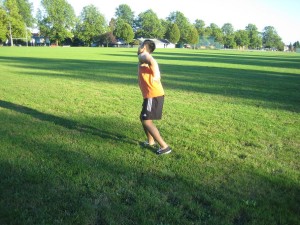Sciatica is described as pain that originates in the lower back and radiates down the leg. It is usually the result of entrapment or irritation of the nerve root or even a radiculopathy syndrome.
Indications and possible causes
Individuals with sciatica can also experience numbness, muscle weakness, pins-and-needles sensation and reflex changes. These symptoms can be worsened by sitting, twisting, sneezing or coughing.
Take note that sciatica is a symptom usually brought about by a lumbar disc herniation or lumbar spinal stenosis which results to irritation or compression of the involved nerve root. These can be caused by wear and tear over time or an injury that results to a ruptured or herniated disc once the inner contents bulges via the damaged outer ring, thus affecting the adjacent nerve roots.

The difference of sciatica from low back pain is that it radiates into the buttock and leg. In most cases, the symptoms resolve after several months. Nevertheless, some might experience persistent or severe symptoms with lengthy period of disability.
Management of sciatica
An individual with sciatica must inform a doctor regarding the specific length and characteristics of the symptoms. The doctor usually performs a history and physical exam. After suitable conservative measures are carried out, an X-ray and MRI can confirm compression of the lumbar nerve root.
Non-surgical approach
Conservative treatment is focused on reducing pain. The primary treatment involves the application of an ice pack or heat pad, non-steroidal anti-inflammatory drugs (NSAIDs), pain medications and muscle relaxants.
Proper body mechanics such as lifting and bending, physical therapy and injection of epidural steroids can also help an individual return to normal activity.
Surgical approach
In cases where non-surgical treatments are not effective and the individual continues to suffer from persistent and debilitating sciatica, surgery might be the solution.
Surgery is aimed on removing the disc herniation or stenosis that compresses the involved lumbar nerve to alleviate the leg discomfort and related symptoms of weakness and numbness. The timing of the surgery is based on the length and severity of the symptoms. Generally, there is a high percentage of successfully eliminating sciatica.
Those who opted for surgery for lumbar disc herniation were able to achieve better improvement in alleviating sciatica than those who chose the non-surgical treatment options.

